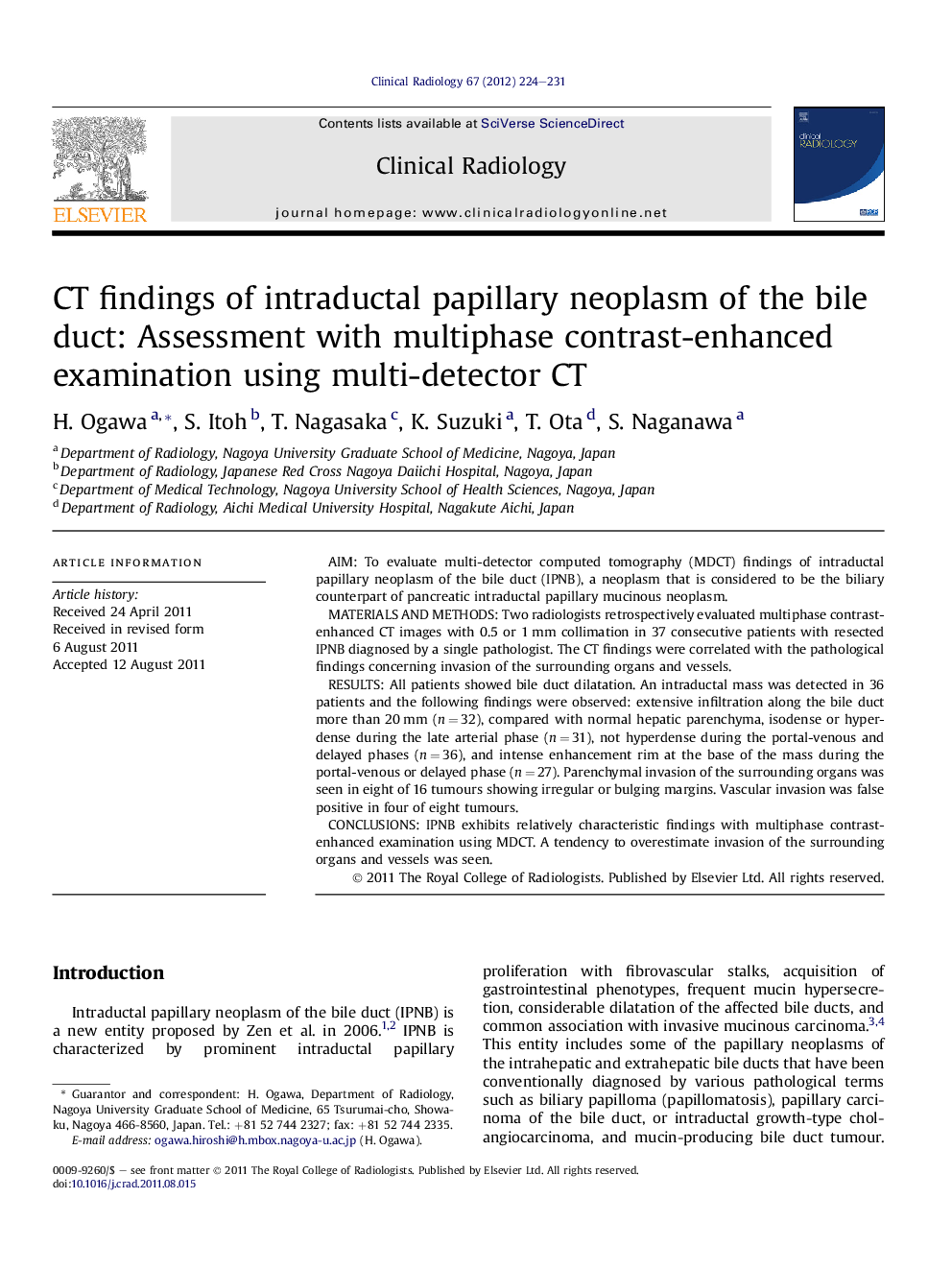| Article ID | Journal | Published Year | Pages | File Type |
|---|---|---|---|---|
| 3981685 | Clinical Radiology | 2012 | 8 Pages |
AimTo evaluate multi-detector computed tomography (MDCT) findings of intraductal papillary neoplasm of the bile duct (IPNB), a neoplasm that is considered to be the biliary counterpart of pancreatic intraductal papillary mucinous neoplasm.Materials and methodsTwo radiologists retrospectively evaluated multiphase contrast-enhanced CT images with 0.5 or 1 mm collimation in 37 consecutive patients with resected IPNB diagnosed by a single pathologist. The CT findings were correlated with the pathological findings concerning invasion of the surrounding organs and vessels.ResultsAll patients showed bile duct dilatation. An intraductal mass was detected in 36 patients and the following findings were observed: extensive infiltration along the bile duct more than 20 mm (n = 32), compared with normal hepatic parenchyma, isodense or hyperdense during the late arterial phase (n = 31), not hyperdense during the portal-venous and delayed phases (n = 36), and intense enhancement rim at the base of the mass during the portal-venous or delayed phase (n = 27). Parenchymal invasion of the surrounding organs was seen in eight of 16 tumours showing irregular or bulging margins. Vascular invasion was false positive in four of eight tumours.ConclusionsIPNB exhibits relatively characteristic findings with multiphase contrast-enhanced examination using MDCT. A tendency to overestimate invasion of the surrounding organs and vessels was seen.
